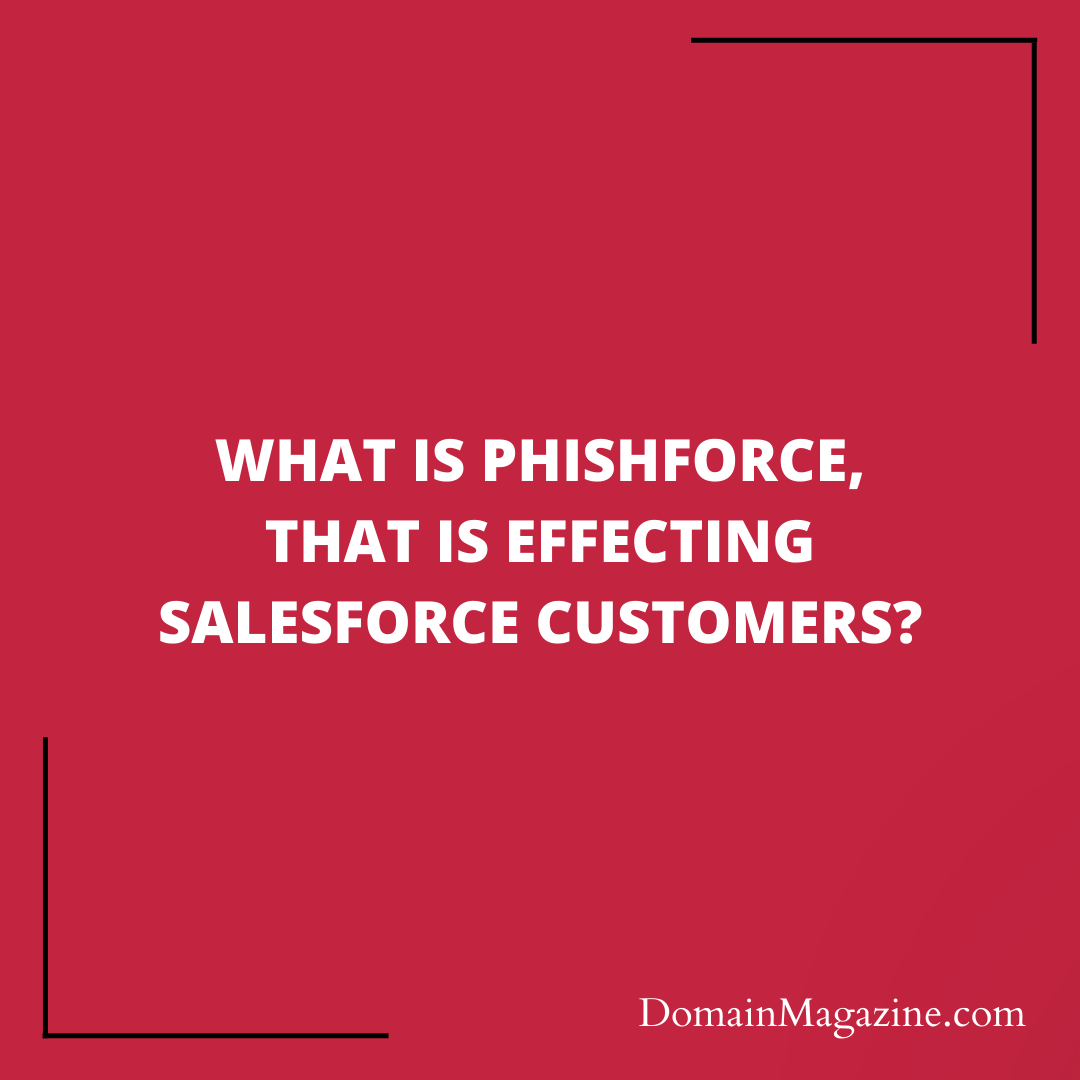As the digital landscape continues to expand, so do the tactics employed by cybercriminals. In a recent discovery by security researchers at Guardio Labs, a new and sophisticated email phishing campaign named “PhishForce” has been identified, posing a significant threat to Salesforce Inc. customers. This article sheds light on the intricacies of this exploit, focusing on the use of domain name spoofing to deceive recipients and offers insights on how businesses and individuals can protect themselves from such attacks.
The Unpatched Exploit that Targets Salesforce Customers:

PhishForce, the name given to this insidious phishing campaign, leverages a cunning combination of techniques to avoid detection by both Salesforce and Facebook’s security measures. By exploiting an unpatched vulnerability, cybercriminals launch targeted email attacks aimed at unsuspecting Salesforce customers, manipulating their perception of legitimacy through domain spoofing.
Spoofing Email Servers and Domains: A Crafty Deception:
In this campaign, attackers skillfully forge email headers to make it appear as if the messages originate from trusted sources like Salesforce. However, in reality, the emails are cleverly disguised, showing Meta Platforms Inc. (parent company of Facebook) as the sender. The attackers are banking on the trust users place in these reputable names to lure them into a false sense of security.
An Inside Look into Phishing Emails:
A critical element of the PhishForce campaign is the deceptive content within the emails. The attackers incorporate a big blue button, seemingly labeled “Request a Review,” to entice users into taking action. However, rather than initiating a review process, clicking on the button redirects users to a malicious phishing page that aims to compromise their Facebook account credentials.
The Art of Clever Deception:

PhishForce takes advantage of legitimate links and email addresses to maintain a façade of authenticity. By hiding within trusted mail gateways, these malicious emails can bypass conventional protective shields and evade spam filters, making it even harder for users to detect the threat lurking beneath the surface.
Abusing Trouble-Ticketing System for Exploitation:
One of the most intriguing aspects of this attack is the ingenious use of Salesforce’s trouble-ticketing system. By sending the phishing emails instead of receiving them, the attackers managed to exploit a role reversal that played a pivotal role in the success of the entire campaign.
A Proactive Response to Phishing Threats:
Despite the complexity of PhishForce, the collaborative efforts of Guardio Labs, Salesforce, and Facebook resulted in a swift and efficient response to the threat. Salesforce’s security team was effective and responsive, taking immediate action to fix the vulnerability and protect their customers.
Conclusion:
As the battle against phishing continues, it is crucial for individuals and businesses to stay vigilant and informed. Phishing attacks like PhishForce underscore the importance of scrutinizing email content, checking for anomalies, and never assuming an email is safe merely because it originates from a reputable domain.
For domain name enthusiasts, understanding the intricacies of domain spoofing and how it can be weaponized in phishing campaigns is essential to bolstering cybersecurity. By staying informed and adopting proactive measures, we can collectively work towards safeguarding our digital domains from the persistent threats of cybercrime.


Join the Discussion